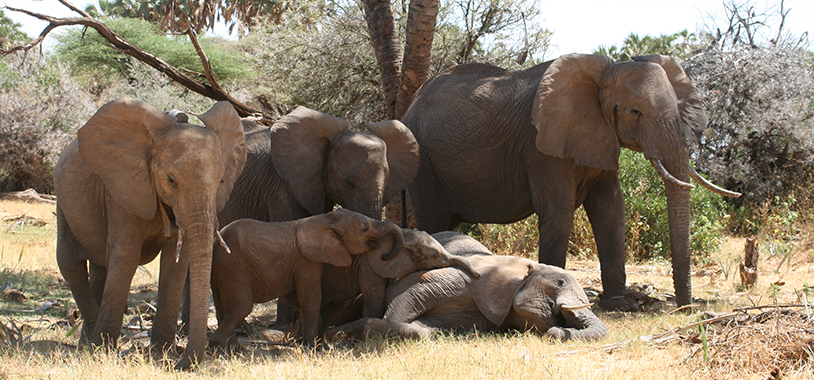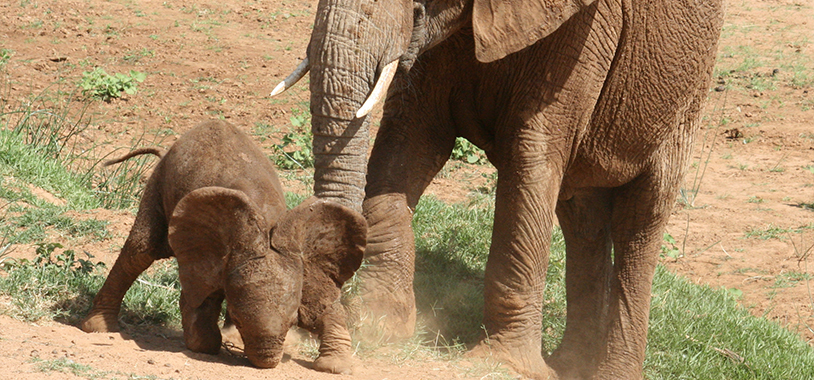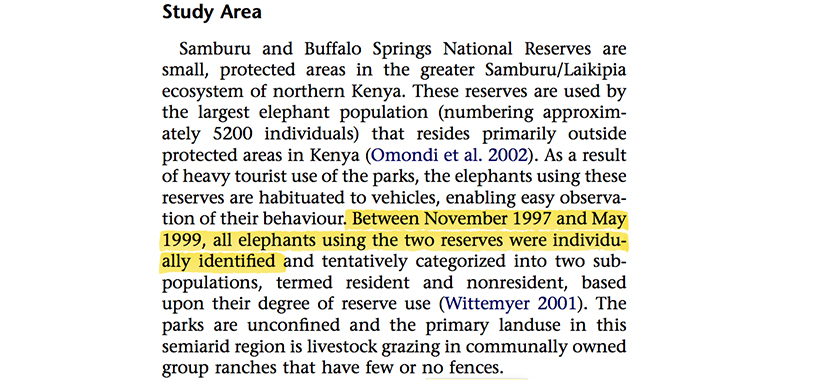Long-term monitoring projects like the one Dr. George Wittemyer started here at Save the Elephants are quite simply invaluable. If science is a search for truth, then scientists ought to strive for a representative picture. Overarching patterns are easily hidden within snapshots. For example, if we look at global temperatures, we see a steep upward trend since the industrial revolution. However, I would not have come to this conclusion during last year’s winter in my home state of Michigan in America, when wind chills dipped to around-35°F. Looking at only one point in time leaves us very little room to draw conclusions because it is prone to misrepresentation. The same is true of sampling only one area. Just because Michigan is freezing doesn’t mean that places in Australia are not hitting record high temperatures at the same time. And so, in many cases, science becomes more of a commentary on minute observations. Each new publication is an offering to the great pool containing pieces of potential truths accumulated over the course of human history.
Long-term monitoring projects give us a greater ability to see. They require large amounts of time, effort, and (most problematically) money, and therefore are relatively rare. But because they advance our understanding at a level much more reliable than a project that is in place for only several months or years at a time, they are terribly important to preserve. Each professor working on the project, each Masters and Ph.D student, adds pieces to a puzzle of greater truth. After a while, certain pieces may contradict one another, and things must be reassembled in a new light, but eventually a picture will emerge. That picture will never be complete given our limited human experience and powers of observation and analysis. But a long-term monitoring project will give you a skeleton, whereas most projects leave you with only a phalange; and although that phalange is beautiful, interesting, and valuable in its own right, it sure would be nice to see how it fits together with all the other bones.
Here in Samburu and Buffalo Springs National Reserves, we are building a skeleton. The research camp has been in place since 1997, when the area’s elephants were first individually identified. Not only are the people here sampling and publishing over time, but the project is adding to a collection of long-term elephant projects, like those in Amboseli and the Dzanga Clearing of the Central African Republic. Thus we will be able to view how area affects elephant ecology in addition to time. Knowing the life histories and movements of individual animals within a specific area, and being able to factor that knowledge into analysis and decision-making, is the envy of many wildlife biologists and conservation managers.
Furthermore, knowing individuals is just plain fun. They give those of us who watch them many wonderful stories to tell. For instance, Shifra introduced me to Cinnamon, matriarch of the Spices family, as a very aggressive and bossy old mama. Cinnamon isn’t going to let anyone share her portion of a delicious bush. I know that Taurus, matriarch of the Zodiacs, is a good mother just by looking at her long line of surviving children. I know from watching Georgia, of the Artists family, that she likes to lie down whenever she possibly can, more than any other elephant I have ever seen. I know to watch out for the big bull Anwar, not because he is mean, but because he is friendly. He loves cars and doesn’t know his own strength (Jerenimo has quite the video of him rubbing himself on the car, resulting in some minor damage). And R29.0315 of the American Indians, Crow’s new little girl, is delightfully spunky. Whenever we come upon her family, I know I can count on an extremely entertaining time watching her zip about. It’s nice to be privy to the lives of individuals – it makes the animals seem real, which they very much are. This is not just a population of random elephants. Knowing each of them enlivens our mission to learn about and save them even more.

Georgia, at 11 years old, lies down much more than most elephants her age. Babies often lie down, older elephants more rarely…unless you are Georgia. This is her lying down with some of her family

R29.0315, Crow’s new baby, is always up to some sort of spunky antics. Here she is running about and rubbing her nose in the dirt by her mother, Crow
So be it for science and a search for truth, for informed management, for stories and mere joy, or for an awakening to the realization that animals are individuals and have their own lives independent of the human sphere, it is good to be in it for the long term. Long-term monitoring projects should be viewed as something truly special. They teach us so much.


